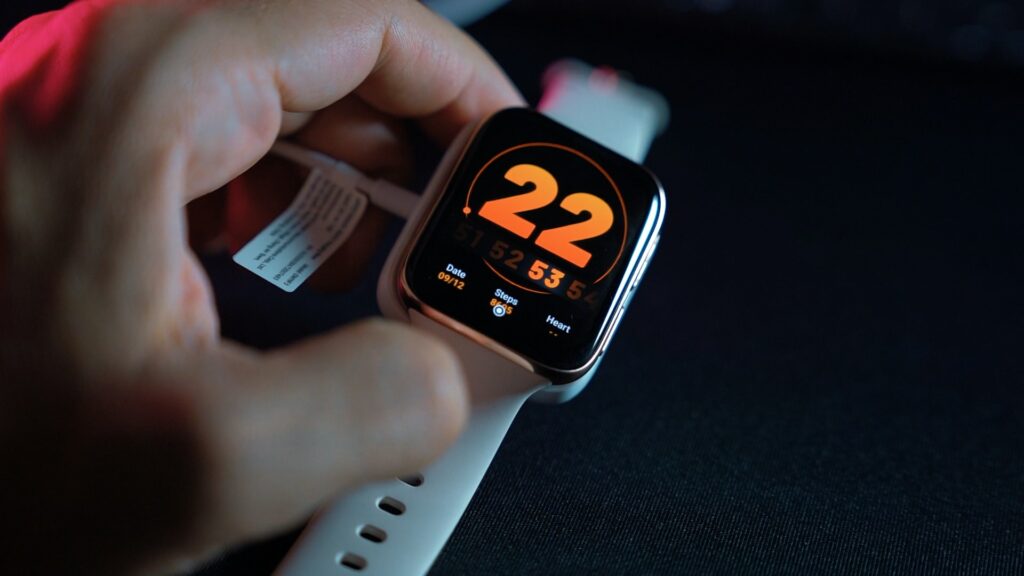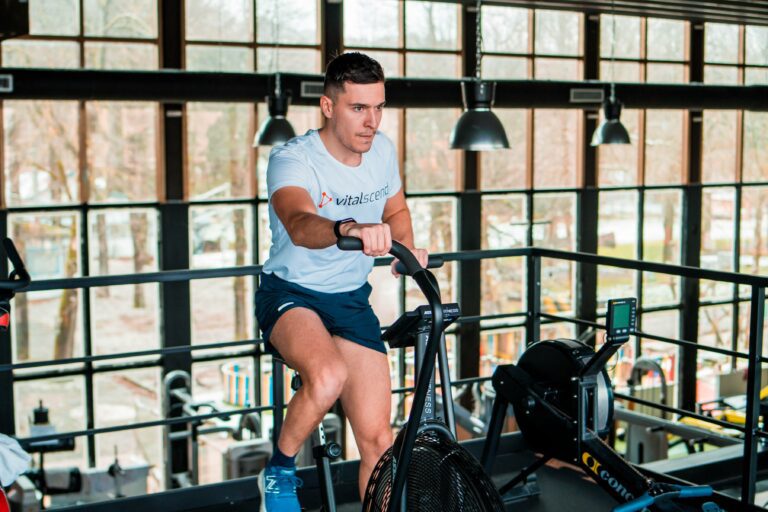The 10000 Steps Challenge: Boost Your Cardio and Get Fit
10000 steps seems like a magical number. Walking is well known to enhance overall health and reduce mortality risk. But why 10,000 steps exactly?
From increasing metabolic rate and fat loss to enhancing cognition and lipid profile, we’ll discover how increasing your step count makes you live longer.
Why walking?
Walking is one of the most underrated activities in the modern era. While many fitness trends are pushing circuit training or HIIT cardio, we forget about walking.
Walking is the simplest movement pattern we use to propel our bodies forward in space. Increasing your step count contributes to something called neat or non-exercise activity-induced thermogenesis. This is the activity that burns calories and gets you all the health benefits without actual training.
It’s kind of like the base layer you need to build your health upon. Kinda like protein for muscle, or darkness and cool temperature for sleep → 10K step is a prerequisite to aerobic health and fitness.
Why walking specifically? well here are a few reasons:
- easy to do, convenient, and practical
- it’s the skill most people possess
- low risk of injury or overuse
- doesn’t stress the body like intense training
- doesn’t impair recovery or disrupt hormonal processes
- doesn’t increase appetite and hunger hormones
- it increases metabolic rate – burns calories [NEAT]
- supports basic aerobic metabolism
- prefers to burn fat for fuel rather than glycogen
- improves and supports mitochondria function
Mortality and Walking – Inverse Correlation
Most modern-day metabolic diseases originate from insufficient levels of physical activity. This contributes to 3.2 million deaths each year and is the fourth leading factor for mortality. Inactive lifestyle increases the risk of all-cause mortality by 20 to 30%. (1)
A sedentary lifestyle is a slow killer. Numerous studies show inactivity impairs physiological functions and elevates chronic inflammation, cancer risk, obesity rates, hypertension, and muscle degradation. It also increases stress and impairs mood and immune function. (2) (3) Not where we want to be.
Since aging on its own is associated with a decline in mitochondrial function, energy production, mobility, etc., it makes sense that regular exercise can contribute to improving health. (4)
A large follow-up of more than 46.000 people showed mortality rates dropping by (5)
- 45% of those who achieved the recommended 150-300 min/week moderate or 75-150 min/week vigorous intensity exercise
- 31% of those who didn’t meet recommendations by increased activity at about 50 min/week of moderate activity
- 49% reduction in those surpassing the recommendation – being more active
Other step-counting studies show that physical activity contributes to greater cardiovascular health, body mass index, blood pressure, and lipid profiles. This suggests an incremental increase of 3000 to 4000 steps daily can accrue additional health benefits. (6)
A higher step count is inversely associated with the risk of cardiovascular events and premature death.
- Those with 8,959 steps daily have a 40% lower mortality risk compared to 4,183 steps.
- Those with 9300 steps daily had a 35% lower risk of cardiovascular events compared to 3500 steps. (7)
summary
Walking and physical activity are inversely associated with mortality. The accrued health benefits enhance physical fitness to a significant degree that aids in longevity.
Benefits of Walking
Walking is an incredible form of exercise that offers numerous benefits for both the body and the mind.
Aerobic Fitness – as with any activity, walking increases the demand for energy production more than sitting. This activates the oxygen transport mechanisms, increases heart rate, and improves lung function. (8) (9)
Heart Health – walking can aid in the primary and secondary prevention of cardiovascular disease. (10) (11) It works by improving lipid profile, (12) reduces high blood pressure (13) and improves circulation.
Mitochondria Boost – low-intensity activity sets the foundation for energy production. By moving and transporting oxygen to the power cells of our body, the mitochondria can generate more ATP. This is a key factor that contributes to the overall longevity-promoting effect of walking.
Fat Loss and Insulin Sensitivity – every 1,000 steps we walk burns about 60 calories. The body doesn’t need to rely on glycogen, thus burning fat for fuel becomes the alternative. (14) Additionally, walking offers an advantage in improving insulin sensitivity and glycemic control, reducing the risk of diabetes. (15) (16)
So why wait? Lace up those sneakers and hit the pavement (or the trails!) for a heart-healthy, mitochondria-boosting, weight-loss, and aerobic fitness-supporting walk today. Your body (and mind) will thank you!

Manpo Meter – Why 10,000 Steps?
There’s a long-held belief that 10,000 steps is the magical number. If you’re one of those FitBit lovers who walk at 11 pm, just to fill in your insufficient 9,878 steps → you don’t need to.
The 10,000 steps is a marketing trick that arose in 1965. The popular Manpo meter. It’s the first Japanese pedometer whose slogan manpo-kei meant 10,000 steps meter.
And you can’t blame it, it sounds pretty good. Hitting the 5 digits, as some like to call it. Manpo hadn’t had any sufficient research to back it up. However, the positive side of it is people started walking more.
And while 10,000 steps isn’t a magical measure for everyone, it’s a pretty good one.
- It’s the exact achievable step count for most healthy people if they’d move more
- It’s a sufficient amount of walking to build the aerobic base and improve cardiovascular health
- It’s very practical and easy to understand. Very specific, so individuals are motivated to achieve it.
Fun Fact
The 10,000-step narrative started with no scientific backup. It’s a marketing trick that hits the right psychological aspect to motivate us to walk more. It started with a Japanese pedometer called the Manpo Meter.
While 10,000 steps isn’t a one-size-fits-all type of number, it’s a pretty good, general number. Of course, the younger, healthier, and more mobile an individual is, walking more is better and easier. The question is, where’s the cut-off? The number of steps after which I stop getting the significant health benefits?

Research in Walking – Counting Steps
4 interesting studies quantify the health benefits of walking.
A cohort study of 16741 elderly women → those who averaged 4400 steps daily had lower mortality rates than those who averaged 2700 steps a day. (7 days measure, 4.3 years follow-up) (17)
The interesting thing is that mortality rates progressively decreased to about 7,500 steps daily, slowly leveling out with more walking. (17) And that’s quite close to other sources suggesting the cut-off is around 7,500-9,000 steps daily. Doing a bit more, especially for the younger population comes with additional benefits, so we consider 10,000 to be a reasonable target.
Another study monitored 3,000 Australians over 5 years (18)
- increasing steps from 1,000 to 10,000 daily had a 46% lower mortality risk
- increasing steps for 3,000 daily for a sedentary person 5 days a week had a 12% reduction in death
Lastly, another review with 6,042 participants used FitBit data to see how mortality risk was associated with step count. (19)
- It seems that more walking was linearly inversely correlated with obesity, sleep apnea, GI reflux, and depression.
- Those with >8.200 steps daily scored better, with a lower incidence of disease.
- The 8-9,000 steps were the cutoff for the most effective reductions in diabetes and hypertension.
summary
Increasing step count reduces mortality risk and improves general health. More walking is linked to lower rates of diabetes, hypertension, and depression.
Weight Loss and Metabolic Rate
The reason walking can be so powerful for weight loss is very clear.
The weight loss industry conveys very restrictive behavior. Calorie deficit, high-intensity cardio, and extreme fasting methods pay the calorie bill. However, this mindset of fast weight loss is ineffective, due to the body’s ability to only effectively burn about 0.5-1 lb of fat weekly.
This introduces the concept of slow dieting, and adapting the body to become a more efficient energy-producing and fat-burning machine. And this is where walking fits perfectly.
See, calorie-wise you burn about 60 kcal per each 1,000 steps. That’s about 600 in total. This varies between individuals, but it’s an overall estimation of course. Supposing one eats as many calories as his/her basic metabolic rate [BMR], and walks 10,000 steps, they’ll lose weight.
This is much easier and more practical than doing intense cardio sessions which put a ton of stress on the body, increase appetite, and cause hormonal imbalances. HIIT cardio isn’t bad by no means, it’s awesome for elevating respiratory fitness, especially VO2max. But it’s not an effective way to lose weight.
The trivial amount of calories burned through walking more [NEAT] can overtime accumulate to be significant for sustainable fat loss. Truth be told, diet, fasting and metabolic efficiency are the areas to focus on if fat loss is the main interest.
Tips for Walking More
How to achieve your objective – walk more? It’s action time. And yes, cardio can be way easier than we make it, we just have to find ways to move more. Your body doesn’t know the difference between playing ping-pong, shivering in the cold, or running on a treadmill. Activity burns calories, simple as that. Here are a few tips
- sports activities → play ping-pong or basketball with your friends
- active transport → park further to walk more, or ride a bike to work
- take the stairs instead of an elevator
- walking meetings → take meetings during a walk, it clears the brain
- listen to podcasts → educate yourself while walking
- standing desk → as an extra tip, use a light treadmill to walk when working at your desk
- fitness tracker → You’ll be surprised how motivating it is to see the actual numbers
- dinner wind-down → take a 10-minute walk after your dinner to wind down
How much walking is 10,000 steps?
10,000 steps is equivalent to about 5 miles or 8 km of walking. Depending on your stride length and walking speed, it may take anywhere from about 50 minutes to 2 hours to walk 10,000 steps.
For example, if you walk at a leisurely pace of 3 miles per hour, it would take you about 1 hour and 40 minutes to walk 10,000 steps. On the other hand, if you walk at a brisk pace of 4.5 miles per hour, it would take you about 1 hour and 8 minutes to walk the same distance.
Regardless of your pace, walking 10,000 steps is a fantastic way to get in some moderate-intensity physical activity and boost your health. Whether you’re strolling through a beautiful park on a sunny day, taking a hike through a scenic trail, or simply pounding the pavement on your daily commute, the act of walking can be a joyous and invigorating experience.
Tracking your steps – Smartband
A fitness tracker, also known as a smartband, is the perfect companion for anyone looking to up their daily step count and lead a more active lifestyle. Not only are these devices convenient and lightweight, they are also equipped with highly accurate sensors that can track your movements with precision.
There are many benefits to using a fitness tracker, including:
- Motivation: Seeing your step count increase throughout the day can be a great source of motivation to keep moving and reach your daily goals.
- Tracking progress: Fitness trackers allow you to track your steps over time, which can be helpful for monitoring your progress and seeing how your activity levels have changed.
- Setting goals: Many fitness trackers allow you to set daily step goals, which can help you stay on track and keep moving towards your overall fitness goals.
- Convenience: Fitness trackers are typically lightweight and easy to wear, so you can track your steps without even thinking about it.
- Accuracy: Modern fitness trackers are equipped with sensors that are highly accurate at tracking steps and other types of physical activity.
summary
Fitness trackers can be a practical and convenient tool for tracking your steps and staying active. Whether you’re an experienced athlete looking to improve your performance or a beginner looking to get started with a fitness routine, a fitness tracker can be a valuable asset.
Conclusion
- 10,000 steps is the most popular measure for physical activity. It is an achievable, yet close to optimal number of steps for the general population to sustain health and aerobic fitness.
- Research validates that walking to about 7,500-9,000 steps accrues significant benefits on aerobic fitness, heart health, metabolic health, mobility, and aging.
- Step-counting studies show walking more is inversely correlated with diabetes, inflammation, cardiovascular disease, depression, and fragility.
- The 10,000 steps number is a marketing trick that came development of the Japanese pedometer – the Manpo meter. It means 10,000 step meter and at the time it didn’t have scientific backing.
- Walking more is a great way to improve metabolic health and lose weight. The trivial amount of calories burned with walking contributes to NEAT. It’s an easy and practical way for fat loss.
- Tips to walk more – park further, skip the elevator, play sports, walking meetings, education [podcasts] on the go, take your dog out, and get a standing desk.








